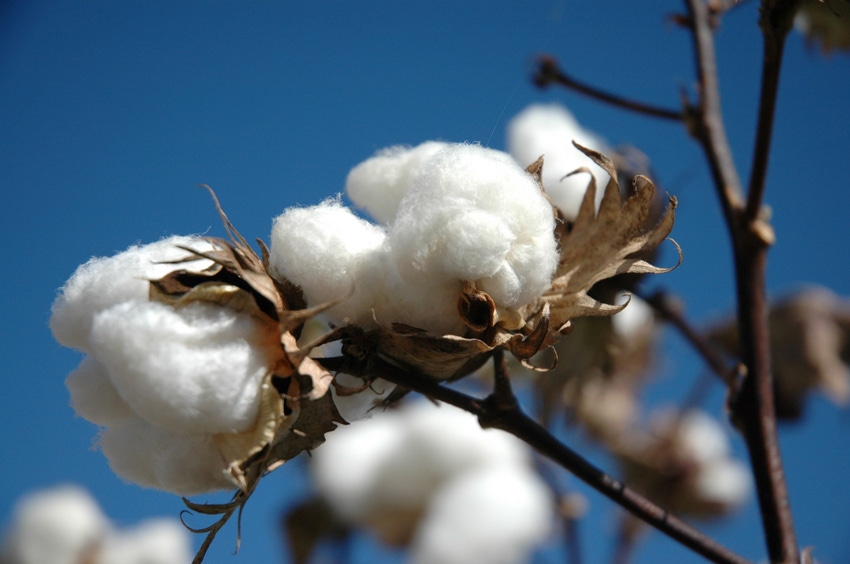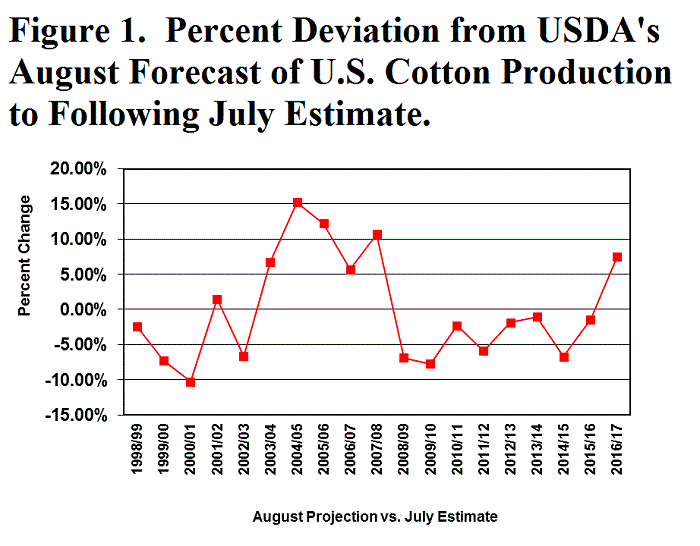
The 2017 season has been an interesting ride. To review:
U.S. cotton plantings were set to be 20 percent higher year-over-year.
The pre-season was marked by above average soil moisture across Texas, raising the possibility of good growing conditions and a large increase in production.
But conditions switched, at least in part, with some acreage in northwestern Texas getting so dry by planting that it was failed due to non-emergence.
Then came widespread rain events in June and early July, accompanied in places with wind damage and hail.
Finally the West Texas crop has received some timely rains in July and early August.
All of this left the production possibilities somewhat muddled, with evidence of above average yields from South Texas, compared to unknown yield and abandonment levels in West Texas.
Futures prices during this time down-shifted from the mid-70s to the upper 60s in apparent response to a major deleveraging of hedge fund longs. Since mid-summer, Dec’17 stabilized above 68 cents and then climbed back over 70 cents prior to the August WASDE.
UNCERTAIN MARKET
The August WASDE shed some light on this picture, but much uncertainty remains. The August WASDE is notable for being the first production estimate based on field sampling of plants to estimate yields. Going into this report, the average of production expectations among surveyed analysts was 18.8 million bales. However, USDA pegged U.S. all cotton production at a surprisingly high 20.55 million bales. The latter was based on a small month-over-month increase in abandonment (7 percent to 8 percent) and a very high projected yield of 892 pounds per acre.
Even with a reasonable increase in the U.S. export number, plus lower carry-in, the production increase translated to a half-million bale increase in expected ending stocks. Both the surprise aspect and the level of this change would usually be construed as bearish. Indeed, the market reaction to the August WASDE was sharply negative with Dec’17 dropping the three cent daily limit in the hour following the report.
But, it is not over. The yield potential in Kansas, Oklahoma, and northwestern Texas will be influenced by how much moisture is available during the couple of remaining weeks of blooming. After that, production potential will depend a lot on having ideal maturation conditions in September and October, which includes having dry, warm, sunny weather with no early freezes.
The September WASDE will either confirm or contradict the current production benchmark. The market will try to anticipate any surprises related to these events, and the resulting volatility will give us what remains of a weather premium in the market.
Over the next twelve months, USDA will adjust their forecast of the size of the 2017 crop. Historically their final crop production estimate has varied an average of 6.3 percent (i.e., either higher or lower) from their initial August forecast (Figure1). That implies that the 2017 crop could be 1.3 million bales higher or lower based on historical variations.
For additional thoughts on these and other cotton marketing topics, please visit my weekly on-line newsletter at http://agrilife.org/cottonmarketing/.

Percent deviation
About the Author(s)
You May Also Like




